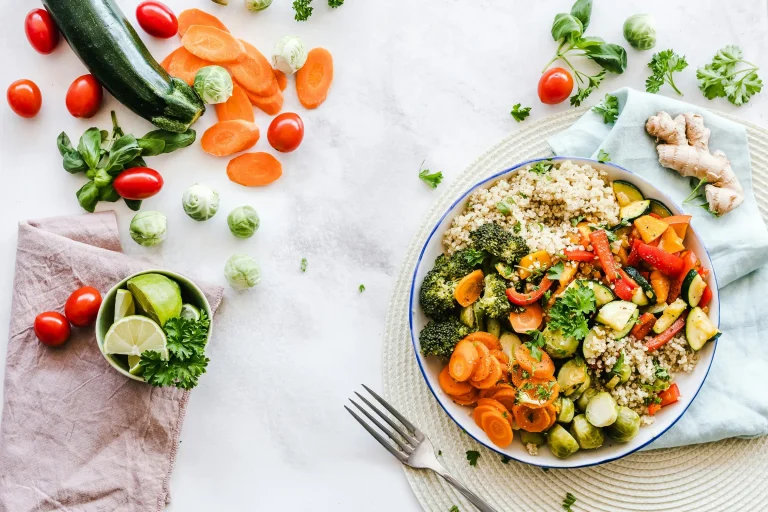Preparing foods to meet guidelines for heart healthy eating does not have to be complicated or intimidating. Heart healthy eating should include foods from all food groups to meet nutrient needs, but they should be prepared in such a way to promote the health benefits of the foods. In general, most heart healthy guidelines will include recommendations for limiting fat and sodium, while including liberal amounts of low fat dairy, fruits, vegetables and lean meats.
Fat: Limiting fat in food preparation involves choosing lower fat food items and then limiting added fats in preparation. Generally, preparing protein foods by baking, roasting, broiling, stewing, steaming, poaching, grilling can keep the fat content low. Limit added fats used in frying, sautéing. Trim all meats before cooking and remove the skin from poultry. Most meats can be browned in a non-stick skillet or pan sprayed with non-stick cooking spray. Be sure to drain fat from meat as it accumulates or place the meat on a rack so the fat will drip away.
Broth from cooked meat may be used for gravies, sauces, or soups after it has been skimmed of fat. Skimmed broth can also be frozen for use at a later date for a flavorful addition to veggies or potatoes. Fat can further be limited by cutting down on the amount of meat in recipe or each serving. Consider using dry beans or soy protein in sauces or soups instead of meat to lower fat content, as well.
Yummy baked goods: Baked goods are another source of considerable fat in the diet. Substituting applesauce or fruit puree for part of the fat in cakes or fruit breads can cut fat content by half or more. Consider using reduced fat cream cheese, sour cream, evaporated milk, or whipped topping in dessert recipes. Serving smaller portions of high fat dessert can also limit fat intake. Don’t be afraid to experiment with lower fat substitutions in baked goods, but be prepared to “tweak” the recipe a time or two to get the best result.
Sodium: Limiting sodium in foods prepared at home does not usually involve completely new recipes. To begin, simply try cutting the amount of salt in half, then gradually reducing it more each time the item is prepared. Adding extra non-salty seasonings, such as onion, garlic or seasoning blends can add flavor as salt is reduced. Look at the recipe to identify the high sodium ingredients and see what substitutions are possible. For example, if a recipe calls for canned condensed soup, consider using a lower sodium canned soup or making your own sauce from scratch. If a recipe calls for high-sodium ingredients such as ham or cheese, consider adding smaller amounts of these items and using more of the lower sodium ingredients, such as pasta or vegetables.
Heart healthy cooking does not have to be an “all or nothing” situation. Making gradual changes to recipes or preparation methods can sometimes be more successful in integrating the healthier items into the everyday diet. Don’t be afraid to try!
Look for other heart healthy eating tips as the website of the American Heart Association – www.heart.org. You can also choose a health healthy recipe in our Health Library. Go to http://bit.ly/2lGXIoC









